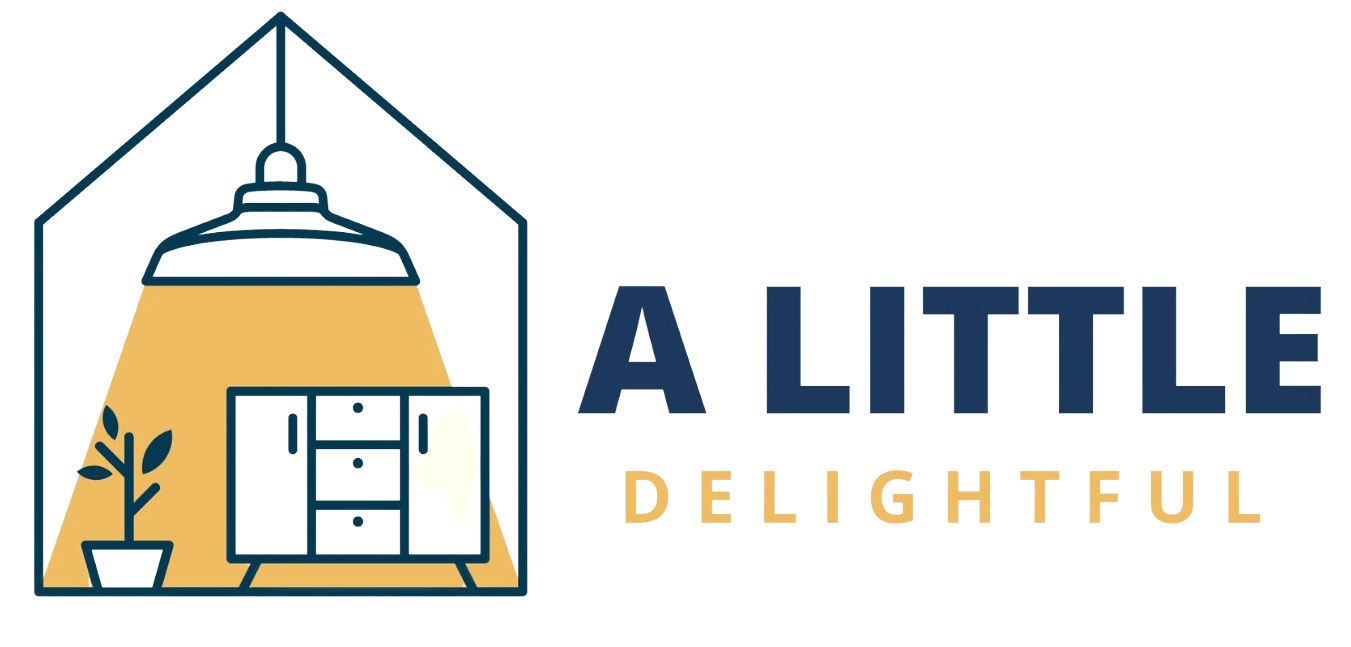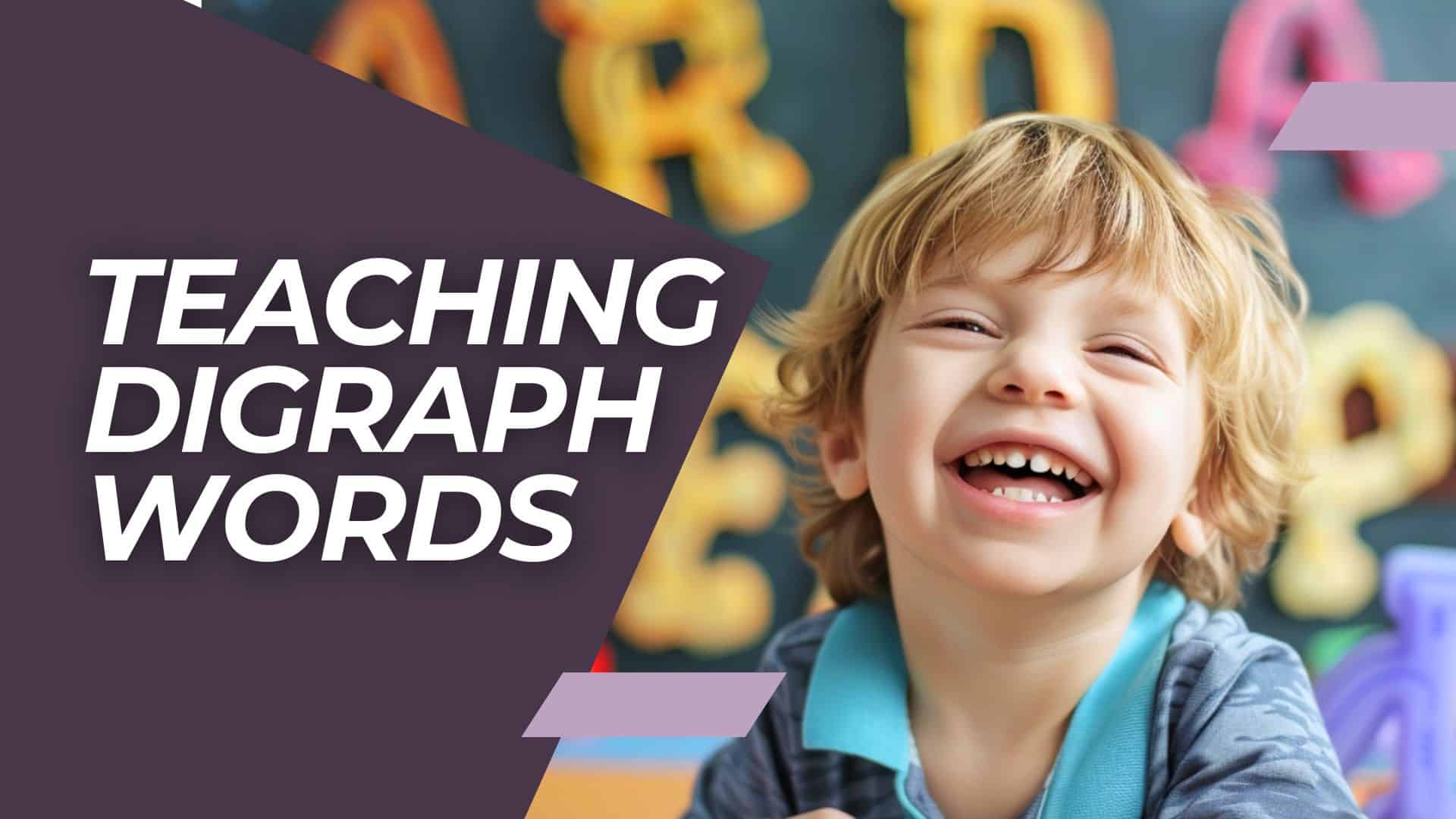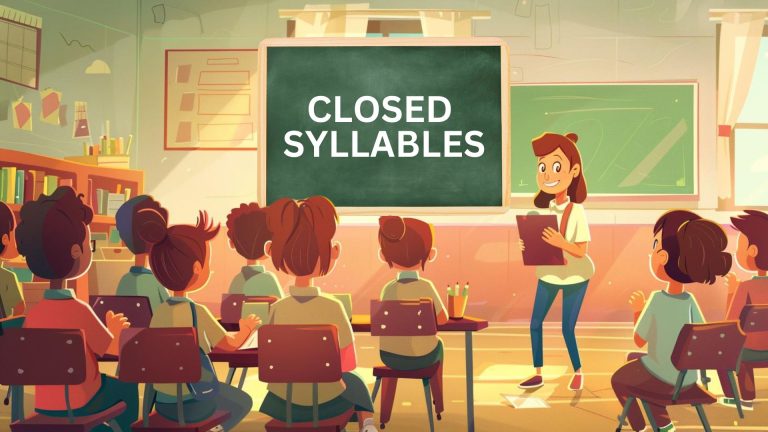Teaching Digraph Words: Importance, Tips, and Strategies
Teaching digraph words is crucial for developing young learners’ strong reading and spelling skills.
However, many students struggle to master these letter combinations that create unique sounds, making it challenging for teachers to introduce and reinforce digraphs effectively in the classroom.
Fortunately, by understanding the importance of digraphs and implementing targeted strategies, educators can help students overcome these difficulties and build a solid foundation for literacy success.
In this blog post, we’ll explore the significance of teaching digraph words, provide practical tips for introducing these letter patterns, and share engaging activities that make learning digraphs fun and memorable.
Whether you’re a seasoned teacher or just starting your career, this guide will equip you with the tools needed to support your students in mastering digraphs and becoming confident readers and spellers.
Importance of Teaching Digraphs in Early Education
1. Reading Fluency
Mastering digraphs is key to helping children read more smoothly. Common digraphs like “sh,” “ch,” and “th” appear often in English words.
When kids can spot these patterns easily, they spend less time sounding out each letter. Instead, they recognize the digraphs quickly and focus on understanding what they read.
For example, a child who knows the “th” digraph can read words like “this,” “that,” and “then” without pausing to decode the individual letters. This leads to more natural, fluent reading.
2. Word Recognition and Decoding
Digraphs also play a big role in word recognition and decoding skills. As children learn these patterns, they learn to identify new words quickly.
Let’s say a child sees the word “chat” for the first time. Knowing the “ch” digraph makes a /ch/ sound, they can quickly work out the word.
Recognizing digraphs in reading passages helps kids rapidly decode words, boosting reading speed and understanding.
3. Spelling Accuracy
Learning digraphs doesn’t just help with reading – it’s important for spelling too. In English, some sounds are spelled with letter pairs, not single letters.
For instance, the /sh/ sound in “ship” is represented by the “sh” digraph. When children know common digraphs, they can spell words more accurately.
They understand that “fish” needs the “sh” letter combination at the end, not just “s.” Teaching digraphs gives kids the tools to become skilled spellers.
Challenges in Learning Digraphs
1. Inconsistent Sound Correspondences
Digraphs can be tricky for kids because they don’t always make the sounds you’d expect. The letters in the digraph work together to represent a new sound.
For instance, the “ch” digraph sounds different in “cheese” (/ch/) and “school” (/k/). These inconsistencies can trip up young learners as they try to sound out words.
They may default to pronouncing the letters individually, leading to confusion and mistakes when reading and writing.
2. Similar Spellings
Another challenge is that some digraphs look alike but sound different. Take “th” as an example. In “that,” it makes a voiced /th/ sound. But in “thin,” it’s unvoiced.
Words like “then” and “think” are spelled almost the same, but the “th” digraph is pronounced differently.
This can make it harder for students to know which sound to use when they see the digraph. They have to learn the letter patterns and how context impacts pronunciation.
3. Need for Explicit Instruction
With all these potential mix-ups, it’s key for teachers to provide direct, clear instruction on digraphs. Students need to be explicitly taught the rules and patterns.
Sporadic or incomplete digraph lessons can leave kids with gaps in their knowledge. They may understand some digraph sounds but not others.
Focused, systematic teaching helps them master digraphs and apply them correctly in reading and writing. Many children will struggle with these tricky letter combos without this targeted support.
Effective Strategies for Teaching Digraphs
1. Multisensory Approaches

Multisensory learning involves using multiple senses to engage students as they learn. Instead of just seeing or hearing information, children interact with it in various ways.
- You might use sand trays where students trace the letters (touch) for digraphs.
- Flashcards with digraph images pair the visual with each sound.
- Songs and rhymes that include digraph words add an auditory element.
These activities hit different senses, reinforcing memory and understanding. They also support diverse learning styles, helping all students grasp digraphs effectively.
2. Structured Literacy Practices
Structured literacy refers to systematic, explicit instruction that is diagnostic and prescriptive. It’s an approach that directly teaches digraphs in a logical sequence.
Lessons are carefully planned, moving from simple to complex. Each digraph is introduced clearly, and there are ample opportunities to practice.
Structured literacy also involves continuous assessment. Teachers monitor progress and adapt instruction as needed.
3. Modeling and Practice
Modeling is a powerful teaching tool for digraphs. When teachers demonstrate blending digraph sounds or using them in words, students see and hear correct pronunciation and usage.
This clear, direct modeling helps kids understand what they need to do. Ample practice is also crucial.
Dictation exercises, where the teacher reads a passage and students write it down, let kids apply their digraph knowledge.
Matching games and focused reading passages provide opportunities to recognize and decode digraphs in context.
The goal is frequent exposure and application, so regular review and practice are essential. Ongoing reinforcement helps students master digraphs and use them automatically in reading and writing.
Tips for Implementing Digraph Lessons
1. Starting with Simple Tasks
When introducing digraphs, it’s best to start with basic recognition activities. For example, you might ask students to identify the digraph sound in spoken words or circle the digraph in written words.
This helps kids get familiar with spotting and hearing digraphs. Once they can recognize digraphs consistently, you can use them in spelling and reading.
Gradual progression prevents overwhelm and builds confidence. Simple activities like flashcard drills or fill-in-the-blank exercises are great starting points.
2. Incorporating Practice in Varied Contexts
Mix up your digraph practice activities to keep students engaged and reinforce learning. Interactive games, songs, and creative writing tasks add variety and fun.
You might challenge kids to write a story using as many “sh” words as possible or play a digraph bingo game. Look for ways to integrate digraphs into other subjects, too.
Students could label a science diagram with “th” words or write a poem featuring “ch” sounds. Practicing digraphs in diverse contexts helps kids understand their use in real reading and writing.
3. Regular Assessments and Feedback
Monitoring student progress is key to successful digraph instruction. Regular assessments help you catch any confusion early and adjust your teaching.
Mix informal checks during activities with more formal quizzes and tests. Please also pay attention to how students use digraphs in their everyday work.
Provide feedback in multiple ways. Correct errors on the spot during practice sessions. Write personalized comments on written assignments.
Schedule one-on-one meetings to discuss each child’s strengths and areas for growth. Frequent, targeted feedback keeps kids on track and motivated.
Challenges in Teaching Digraphs to Kids with Dyslexia

Mastering digraphs can be a significant challenge for children with dyslexia.
Many students who struggle with reading and spelling find themselves in special education classrooms due to difficulties linking digraphs to their corresponding sounds.
While these learners may be able to decode words with one-to-one letter-sound correspondences, such as “cat” or “dog,” their confidence and progress can quickly deteriorate when faced with words containing digraphs like “smart” or “ship.”
When a child with dyslexia encounters a word with a digraph, they may attempt to blend the sounds individually, resulting in confusion and frustration.
For example, the word “smart” might sound like “s-m-a-r-t,” leading to a nonsensical pronunciation like “sma-ri-tuh.” Repeated experiences like this can erode a child’s trust in the reading system and hinder their overall literacy development.
How to Help Dyslexic Kids Learn Digraphs
To help students with dyslexia overcome this barrier, teachers must provide explicit, systematic instruction on digraphs. This includes:
1. Clearly explain what digraphs are and how they function in words.
2. Providing ample practice opportunities to identify and blend digraph sounds in isolation and within words.
3. Using multisensory techniques to reinforce the connection between digraphs and their sounds.
4. Incorporating regular review and repetition to help students achieve mastery.
By dedicating time and attention to teaching digraphs in a structured, sequential manner, educators can help children with dyslexia build a solid foundation in reading and spelling.
Summing It Up
Educators can better support their students’ learning journey by understanding the importance of digraphs in reading fluency, word recognition, decoding, and spelling accuracy.
However, challenges may arise due to inconsistencies and similarities in digraph sounds and spellings.
Implementing effective strategies such as multisensory approaches, structured literacy practices, and consistent modeling and practice can help overcome these obstacles.
Incorporating engaging activities and resources in classroom and home settings reinforces digraph mastery.
As teachers, it’s our responsibility to equip ourselves with the knowledge and tools necessary to provide the best possible instruction for our students.
By prioritizing the teaching of digraphs and continuously seeking opportunities for professional development, we can help our students become confident, skilled readers and spellers.







